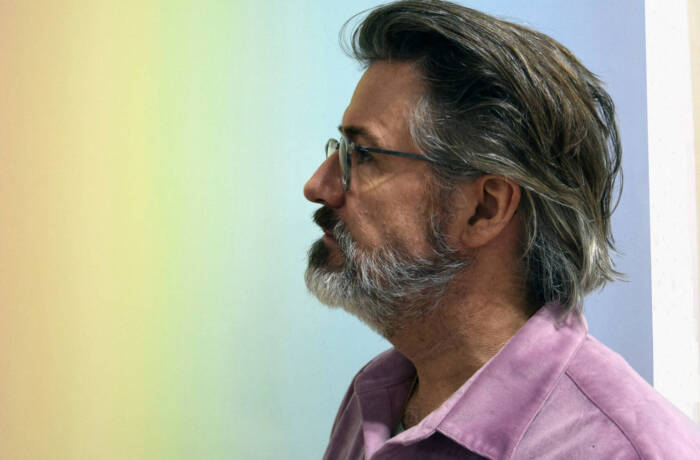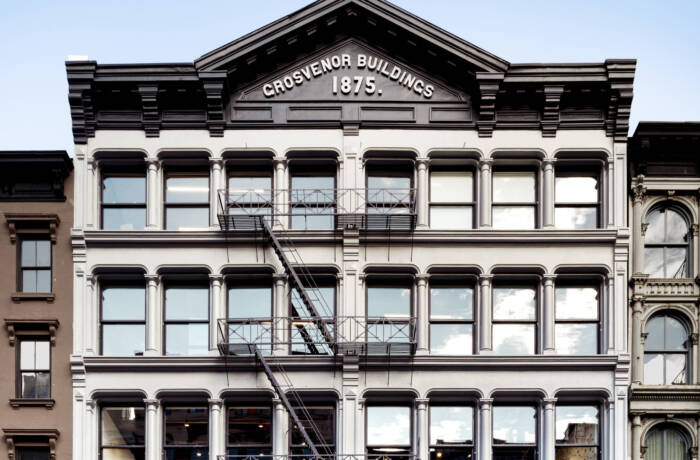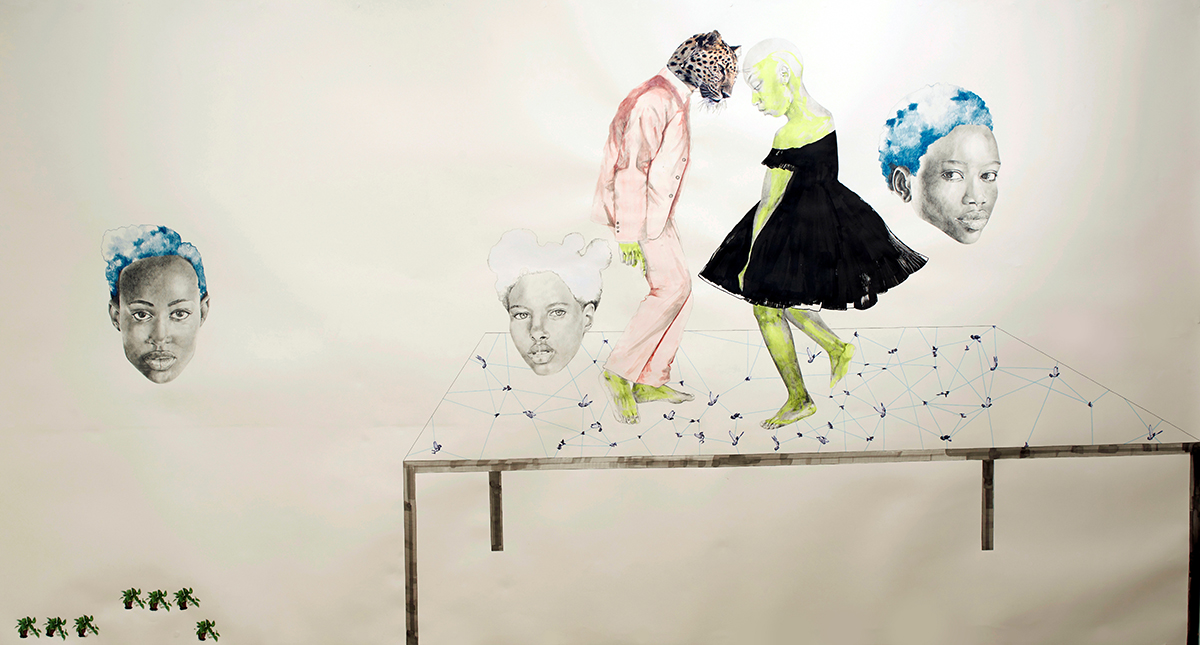
ruby onyinyechi amanze’s ‘Without a Care in the Galaxy, we Danced on Galaxies (or Red Sand with that Different Kind of Sky) with Ghosts of your Fatherland Keeping Watch’ (2015). Deutsche Bank Collection
Nigerian-born, US-based ruby onyinyechi amanze, the official artist of 2019’s Deutsche Bank Wealth Management Lounge at Frieze New York, is exploring new realms of drawing, as she explains to Clint McLean
DEUTSCHE BANK WEALTH MANAGEMENT x LUX
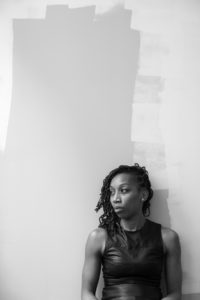
The artist ruby onyinyechi amanze
Picture a landscape without earth, sky or horizon and then dance a motley crew of aliens across the naked expanse. Arrange things such as birds, motorcycles and fragments of architecture around the figures as though musical notes on a staff. If this can be done with a light enough touch, the resulting image may be something like the drawings of ruby onyinyechi amanze.
The 36-year-old Nigerian-born artist, whose output is primarily drawings and works on paper, has become best known for a body of work she refers to as ‘aliens, hybrids and ghosts’. These sometimes large-scale pencil drawings, enhanced with ink, acrylic and photo transfers, depict strange hybrid creatures, often part-human and part-creature, in unexplained narratives.
Follow LUX on Instagram: the.official.lux.magazine
Before moving to the US in the mid- 1990s, amanze (who prefers to have her name all in lowercase) spent her childhood in the UK, but she prefers to avoid geographical and national identifiers. “None of them feel quite right,” she tells me from her home in Philadelphia. “Too vague? Too simple? Missing the nuance?” This post- national thinking is central to the direction her work took in 2012 while she was living in Nigeria, thanks in part to a Fulbright Scholarship. That was when amanze developed the cast of characters that helped her explore how she felt alien in a place that was both familiar and foreign. “I was going between those two extremes and wanted to look at that through the lens of these other beings and not as a self-portrait,” she explains. Her first character, Ada, was an electric-yellow doppelganger; she was followed by Audre, a leopard-headed figure presenting as male. Others – Pigeon, Twin and Merman – appeared over the following months.
These characters have continued from that 2012–13 body of work into the dream worlds of amanze’s recent drawings, which she says are now more about space. On smooth, heavy cotton paper, the characters are enveloped by white expanses, yet this absence has a presence. Her alien characters help sculpt and define that space, but are now subordinate to it.
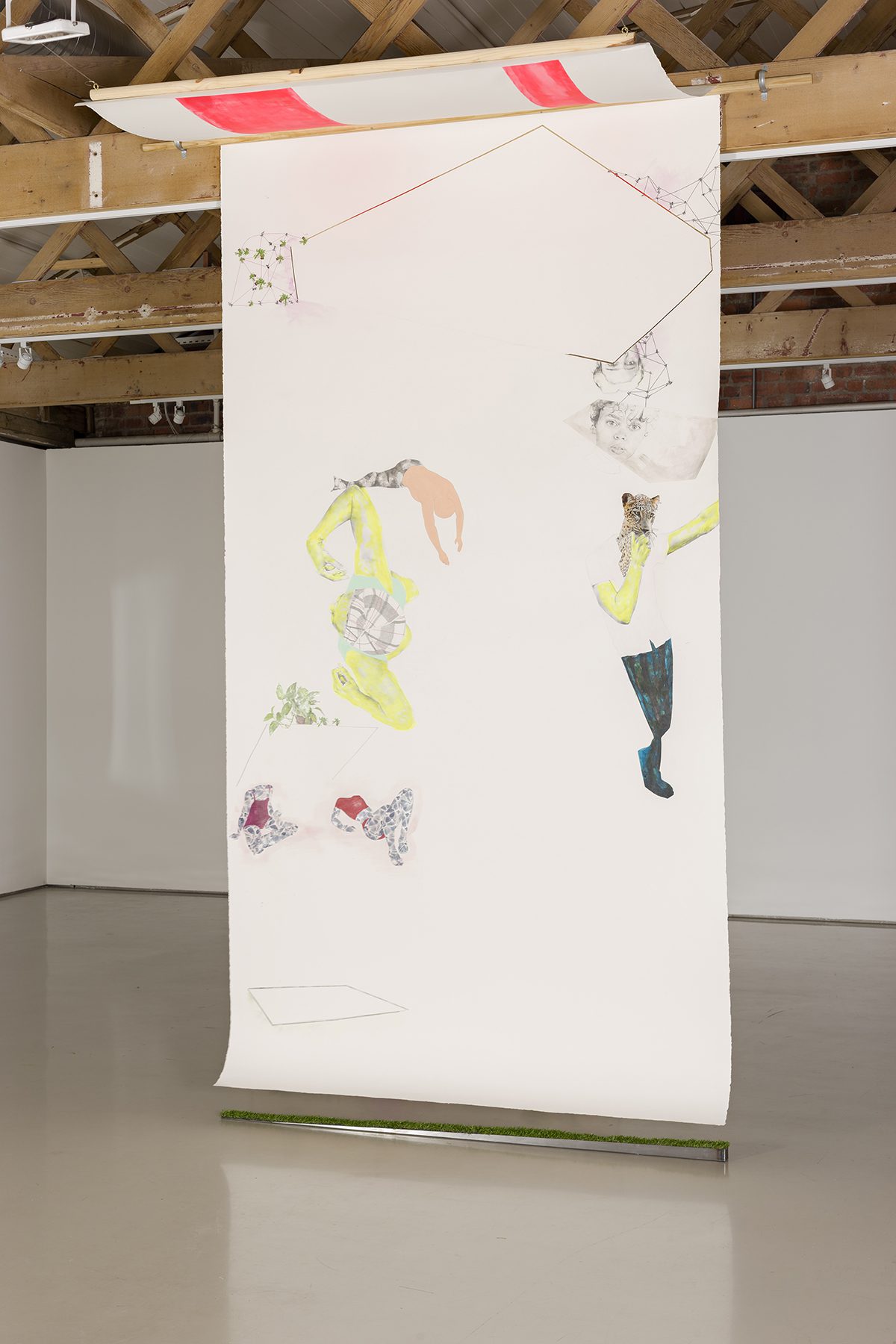
‘The Gap [and the beams of sun, special ordered on our behalf]’ (2017). Image courtesy of the artist and the Goodman Gallery
ruby onyinyechi amanze: Home can be many different places and not just geographical ones with borders and points on a map. There can be mental, emotional and spiritual kinds of places that you can go back and forth between very easily. All of them can collide and you can live in all spaces at once. But geographically I call Philadelphia home, I call Brooklyn home, and though I haven’t actually lived in London, I call London home, and I call Lagos home.
LUX: Do you still feel alien in these places?
ruby onyinyechi amanze: Yes, definitely, and that’s why I connect more with other people who move between worlds in a way that feels similar to me. I identify with those people and that energy and view those in- between worlds as their own country and space. So yes, I do feel like an alien in many places I find myself. I meet other aliens who identify in similar ways and there’s a shared connection there for people who have this sort of relationship to place.
Read more: Curator Zoe Whitley on the art of collaboration
LUX: Your work seems to have four ‘characters’: the aliens, space, paper and drawing.
ruby onyinyechi amanze: I think that’s accurate. If I was to put them into hierarchical order, then the figures would be the least important. They were once, but now they’re not and may drop out of future drawings altogether. There are some current smaller drawings that do not have these figures and in fact the chapter of drawings before this body of work were all abstract.
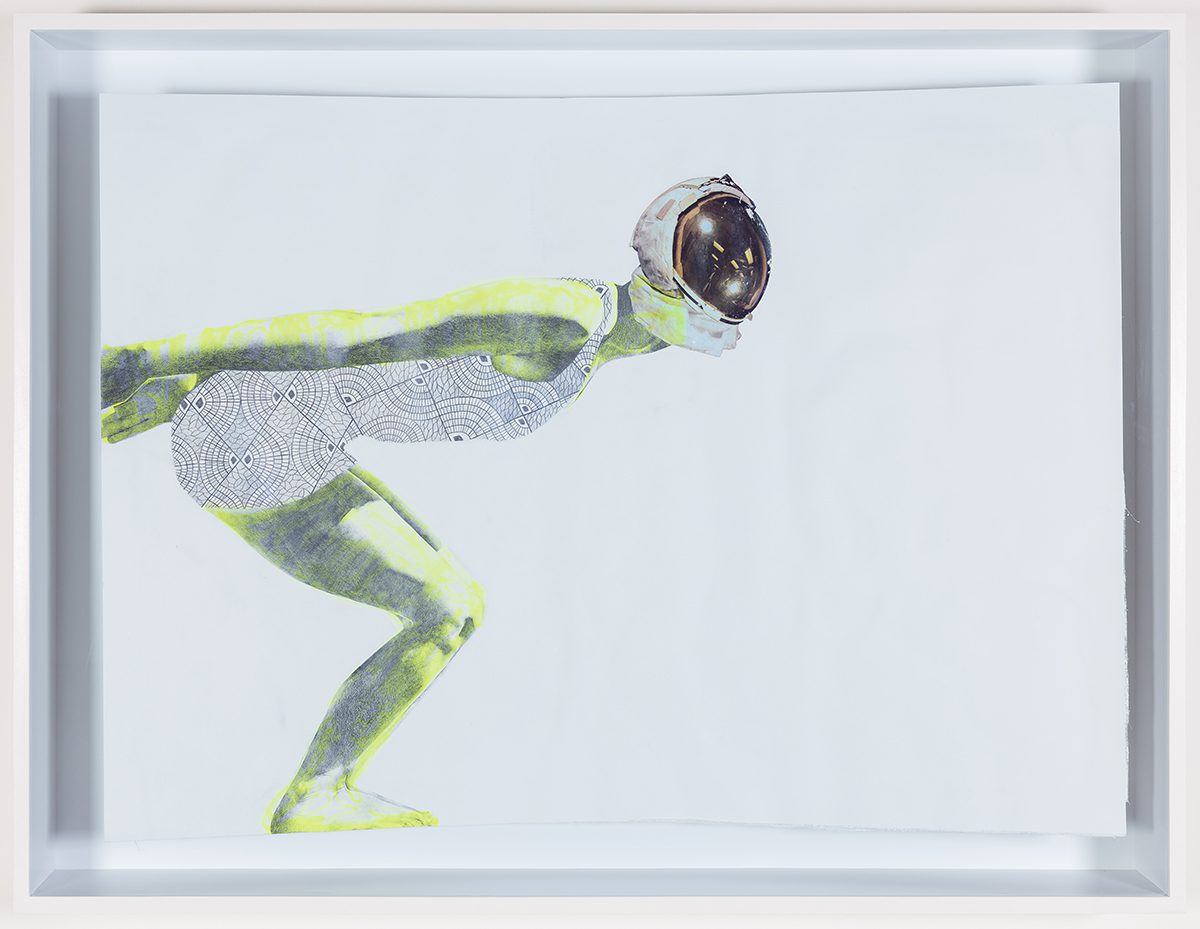
‘Don’t Stay’ (2018). Image courtesy of the artist and the Goodman Gallery
LUX: Will you be exploring this new approach to drawing in your work at Frieze?
ruby onyinyechi amanze: When I started this particular body of work, the development of the hybrid nature of some of the beings that inhabit the space was certainly much more central to what I was thinking about. But I think at this point my interest is much more in the space itself and in playing – that’s very important to me. There’s something magical in the drawing process and in the larger context of how one can move through space. Also, on the paper plane, to be able to move and push and pull and create entrances and windows and alleyways and all of these things that suggest the space, is the meat of the work and less an issue about a mix of cultures – although that stays as a founding root of it. I had a show in 2018 with Goodman Gallery in Cape Town entitled ‘there are even moonbeams we can unfold’. There were some new pieces that were shown there for the first time and a few pieces that came off the wall or interacted with the architecture. I’m interested now in works that are sculptural in some way, so that is a part of the work at the Deutsche Bank Wealth Management Lounge. I want the works in one way or another to have weight to them.
Read more: Sarah Morris’ architectural explorations at the White Cube, London
LUX: What was the catalyst for moving into sculptural paper?
ruby onyinyechi amanze: It’s the point in the work and my studio practice that feels like the most ‘alive’ part of the process right now – discovering ways that paper can hold physical weight and have a presence in the space it’s in and can physically engage with the viewer and/or with the architecture. That comes from what happens inside the drawings: moving through spaces and spaces colliding and planes and all of those things, and to allow the drawn world to become three-dimensional. The two-dimensional space of the paper has never emotionally or spiritually felt flat to me. I enter it in some weird way and am approaching it from that perspective.
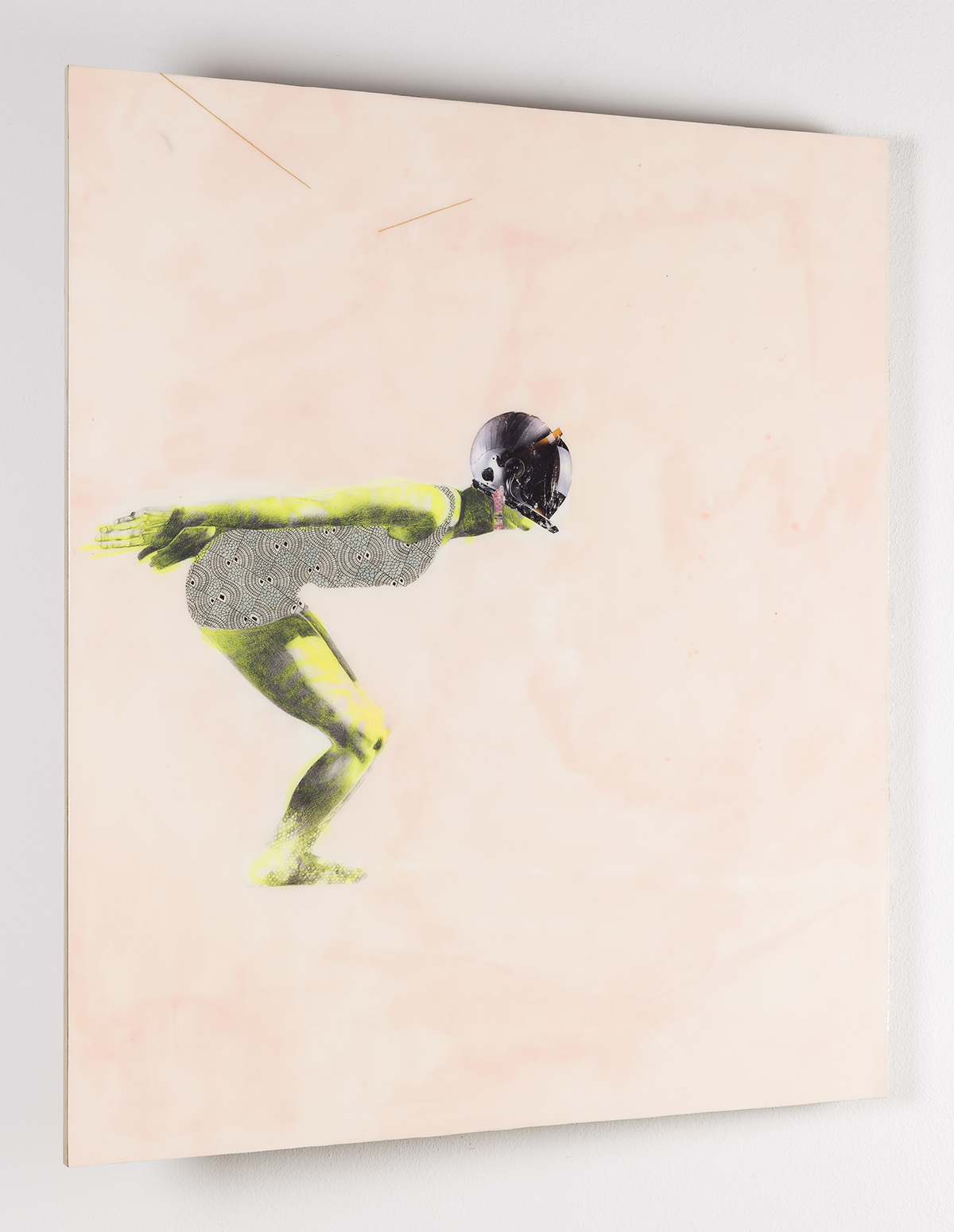
‘I was never really there’ (2018). Image courtesy of the artist and the Goodman Gallery
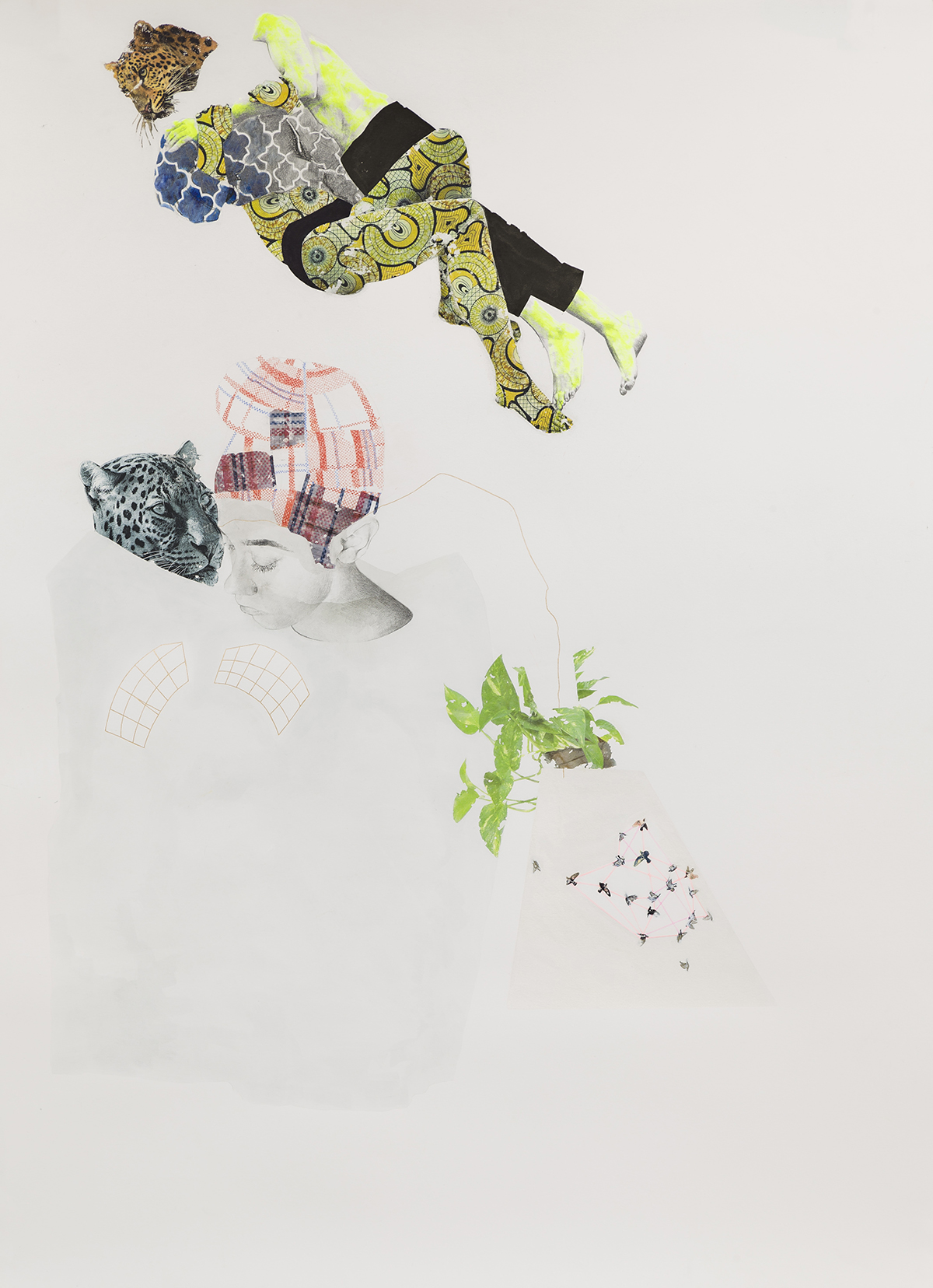
‘Canopies, Lungs and Effervescence’ (2018). Image courtesy of the artist and the Goodman Gallery
LUX: Tell us about your love of paper?
ruby onyinyechi amanze: I find it to be very beautiful as a material. It’s so rich in its history and in its simplicity. To think about the process and history of paper as a whole, the history of this specific piece of paper – and I can now embed additional narratives and marks in it. Yet it came to me with so much embedded subtly into the fibers already. I appreciate subtlety and think it’s poetic. There’s a lot of raw potential in what you can do to further manipulate this material. It can take many forms and all of those things excite me.
LUX: You lie on top of your drawings when you are creating them and leave marks on them. Do these add to the artwork?
ruby onyinyechi amanze: Yes, always. Paper is already imperfect when it comes to me. It’s already scarred in some way. So additional scars are part of its story and part of its history. Paper is like skin. It holds the memory of these things whether they are visible or not.
A selection of new works by ruby onyinyechi amanze will be on display in the Deutsche Bank Wealth Management Lounge at Frieze New York on May 1–5, 2019, presented in collaboration with Deutsche Bank’s Art, Culture & Sports division.
This article first appeared in the Deutsche Bank Wealth Management x LUX supplement inside the Summer 19 Issue


